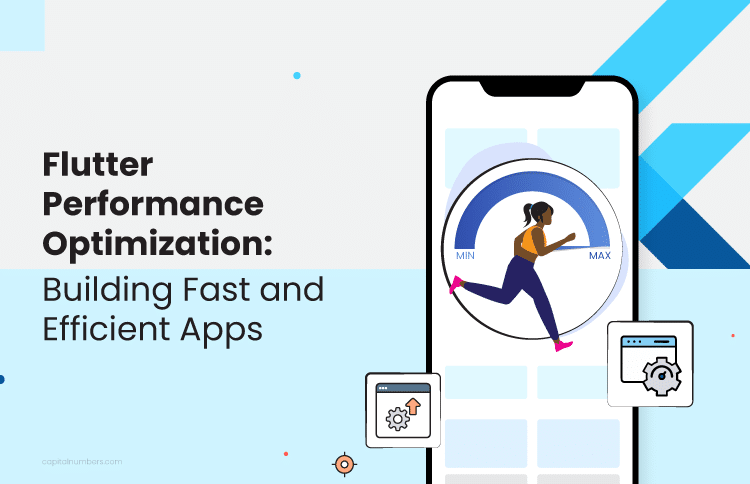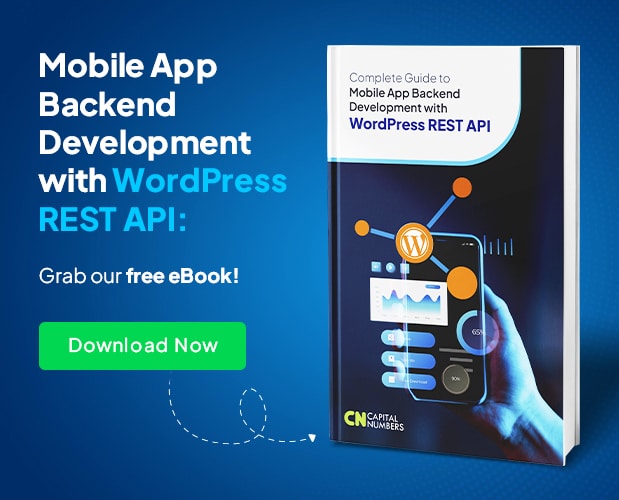Flutter Performance Optimization: Building Fast and Efficient Apps
Table of Contents
The Flutter platform is well known for its beautiful user interface and its cross-platform capabilities, but optimizing performance is critical to delivering smooth and responsive applications. We will explore the best practices for Flutter performance optimization to assist you in building fast and efficient applications.
1. Understanding Flutter’s Performance Model
Flutter renders UI using the Skia Graphics Engine, and performance bottlenecks often arise from:
- Expensive widget rebuilds
- Heavy computations on the main thread
- Inefficient state management
- Poorly optimized animations
By optimizing these areas, we can achieve a smooth 60 FPS (frames per second) or even 120 FPS performance in Flutter apps.
2. Optimizing Widget Builds
Use Stateless Widgets Where Possible
- StatelessWidget is more efficient because it does not rebuild unnecessarily.
- Prefer const widgets where possible to reduce object recreation.
const Text('Hello, Flutter!')
Minimize Rebuilds with const Widgets
- Declaring widgets as const ensures they don’t rebuild unless necessary.
- Use const constructors in widget trees.
class MyButton extends StatelessWidget {
const MyButton({super.key});
}
Avoid Rebuilding Entire Widget Trees
- Use shouldRebuild for ListView.builder() to avoid rebuilding unchanged items.
- Extract frequently changing widgets into separate widgets.
ListView.builder(
itemBuilder: (context, index) => MyListItem(item: items[index]),
)
3. Efficient State Management
Unnecessary setState() calls lead to performance issues. Use efficient state management solutions like:
- Provider (lightweight, recommended for most apps)
- Riverpod (scalable and testable)
- Bloc (best for complex state logic)
- GetX (simple and reactive state management)
Example using Provider:
class CounterProvider with ChangeNotifier {
int _count = 0;
int get count => _count;
void increment() {
_count++;
notifyListeners();
}
}
Using Consumer to rebuild only the necessary UI:
Consumer(
builder: (context, provider, child) {
return Text(provider.count.toString());
},
);
4. Improving UI Rendering Performance
Use RepaintBoundary to Reduce UI Repaints
Wrap widgets with frequent UI updates inside a RepaintBoundary to optimize rendering:
RepaintBoundary(
child: MyAnimatedWidget(),
)
Optimize Scrolling Performance
- Use ListView.builder() instead of ListView().
- Set cacheExtent to keep more items in memory for smoother scrolling.
ListView.builder(
itemCount: items.length,
cacheExtent: 1000, // Caches off-screen items
itemBuilder: (context, index) => ListTile(title: Text(items[index])),
);
5. Animations: Keep Them Smooth
Use AnimatedBuilder for Efficient Animations
Instead of using setState() inside animations, use AnimatedBuilder:
AnimatedBuilder(
animation: myAnimation,
builder: (context, child) {
return Transform.scale(scale: myAnimation.value, child: child);
},
child: MyWidget(),
)
Use Lottie for Lightweight Animations
Instead of using heavy GIFs, use Lottie for vector animations:
Lottie.asset('assets/animation.json')
You May Also Read: Flutter vs. React Native: Choosing the Right Framework
6. Memory & CPU Optimization
Dispose Controllers to Prevent Memory Leaks
Always dispose of controllers in dispose() method:
@override
void dispose() {
myController.dispose();
super.dispose();
}
Use compute() for Heavy Computation
Move heavy tasks to an isolate using compute():
Future fetchData() async {
final result = await compute(heavyTask, inputData);
}
7. Optimize Network Calls
Use dio Instead of http
- dio supports interceptors, caching, and better response handling.
Future final dio = Dio();
final response = await dio.get('https://api.example.com/data');
Enable Gzip Compression
Ensure API responses use Gzip compression to reduce payload size.
Use Pagination for Large Data
Instead of fetching all data at once, use pagination:
fetchData(page: 1, limit: 20);
8. Optimize Images & Assets
Use CachedNetworkImage for Efficient Image Loading
This caches images to avoid unnecessary network calls:
CachedNetworkImage(
imageUrl: 'https://example.com/image.jpg',
placeholder: (context, url) => CircularProgressIndicator(),
)
Use WebP Format for Images
WebP images are smaller than PNG/JPEG, improving loading times.
Compress Images Before Uploading
Use Flutter Image Compressor to reduce image size without quality loss.
final compressedFile = await FlutterImageCompress.compressWithFile(
file.path, quality: 70
);
9. Debugging & Monitoring Performance
Use Flutter DevTools
Run:
flutter pub global activate devtools
flutter run --profile
Enable Performance Overlay
debugShowPerformanceOverlay: true
Use debugPrintRebuildDirtyWidgets()
This prints unnecessary widget rebuilds.
debugPrintRebuildDirtyWidgets();
Looking to build high-performance, beautiful mobile apps? Hire our expert Flutter developers today to bring your vision to life with seamless cross-platform experiences. Contact us now!
Conclusion
Optimizing performance in Flutter requires:
- Minimizing unnecessary widget rebuilds
- Using efficient state management
- Optimizing scrolling and rendering
- Handling animations and network calls smartly
- Debugging performance issues using Flutter DevTools
By following these best practices, your Flutter app will be fast, smooth, and efficient!


















